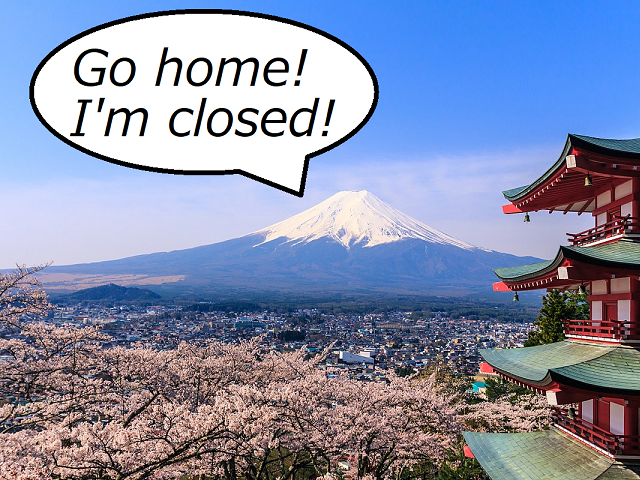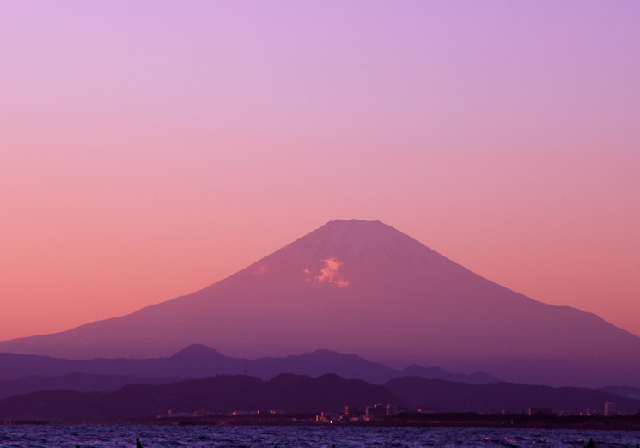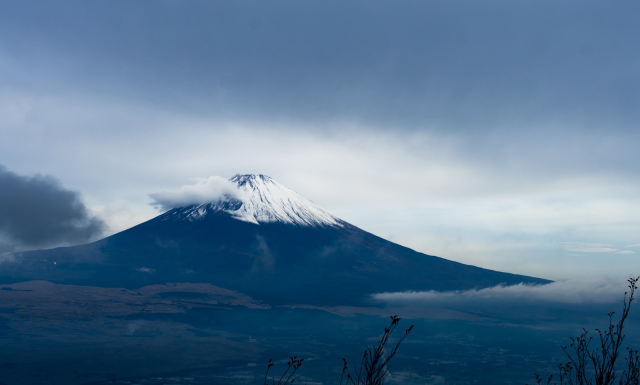
Both prefectures that border Japan’s tallest mountain say that hiking trails will remain closed throughout the summer, politician suggests writing haiku poems instead.
In Japanese, there’s a saying that “You’re wise to climb Mt. Fuji once, but a fool to climb it twice.” This year, though, is not going to be providing travelers with a chance at wisdom.
On Monday, the government of Shizuoka Prefecture, one of the two prefectures by which Mt. Fuji can be accessed, said that they will be keeping Shizuoka’s three hiking trails that lead to the top of the mountain closed throughout the summer. Under normal conditions, the trails would have been open to the public during Mt. Fuji’s official climbing season, which this year was scheduled to run from July 10 to September 10. In response to the coronavirus pandemic, though, the decision was reached to keep the trails closed.
The closure affects the Subashiri, Gotemba, and Fujinomiya trails, all of which start at “fifth stations” half-way up Japan’s tallest mountain. Shizuoka’s decision comes after Yamanashi, the other Fuji-adjacent prefecture, already announced that it will not be opening its Yoshida Trail, that leads to the peak, this summer, meaning that all four paths to Mt. Fuji’s summit will be closed.
While alpine slopes with the boundless sky above may not spring to mind when thinking of places likely to be hotbeds of airborne virus transmission, Mt. Fuji’s popularity as a travel destination, combined with a relatively narrow window in which ascents are allowed, can create human traffic jams as hikers stand around in close proximity waiting for their turn to walk on narrow sections of the trails. There’s also the fact that the most common Mt. Fuji itinerary is to time your hike so that you draw near to the peak late at night, spend a couple hours sleeping in a communal room in a small mountain hut among a large group of strangers, then arrive at the top just in time to see the sunrise.
That kind of close, extended proximity to others isn’t something Shizuoka and Yamanashi want people exposed to, so the trails will be remain closed, and before anyone starts thinking about just hiking up during the off-season, bear in mind that for as gentle and inviting as Mt. Fuji’s slopes may look from afar, a misplaced step can lead to lethal consequences with shocking speed, especially near the top or in cold-weather conditions.
The Shizuoka government has yet to reach a decision as to whether or not access roads to the mountain’s various fifth stations, where the trails start, will remain open while the trails are closed.
“This summer I would invite people to enjoy taking photos of Mt. Fuji,” said Shizuoka governor Keita Kawakatsu, “composing haiku about it, or gazing at it from afar.” We’d add munching on a slice of Mt. Fuji bread to the list of alternatives, while taking the extra time to maybe plan a sea-to-summit hike for 2021 using these bilingual maps.
Source: NHK News Web
Top image: Wikipedia/Gryffindor (edited by SoraNews24)
Insert images: Pakutaso (1, 2)
● Want to hear about SoraNews24’s latest articles as soon as they’re published? Follow us on Facebook and Twitter!



 Barricades placed on Mt. Fuji as mountain officially closes because of coronavirus【Video】
Barricades placed on Mt. Fuji as mountain officially closes because of coronavirus【Video】 Mt. Fuji is now open again following 2020 shutdown
Mt. Fuji is now open again following 2020 shutdown Human traffic jam on Mt. Fuji shows why weekdays are the best days to hike the symbol of Japan
Human traffic jam on Mt. Fuji shows why weekdays are the best days to hike the symbol of Japan Three people die on Mt. Fuji less than 24 hours after official start of climbing season
Three people die on Mt. Fuji less than 24 hours after official start of climbing season Search for live-streamer who fell from Mt. Fuji finds badly damaged corpse half-mile below peak
Search for live-streamer who fell from Mt. Fuji finds badly damaged corpse half-mile below peak How to order snacks on a Shinkansen bullet train in Japan
How to order snacks on a Shinkansen bullet train in Japan Demon Slayer: Kimetsu no Yaiba gets new roller coaster attractions and food at Universal Studios Japan
Demon Slayer: Kimetsu no Yaiba gets new roller coaster attractions and food at Universal Studios Japan Nintendo history you can feel – Super NES, N64, and GameCube controllers become capsule toys
Nintendo history you can feel – Super NES, N64, and GameCube controllers become capsule toys New Nintendo Lego kit is a beautiful piece of moving pixel art of Mario and Yoshi【Photos】
New Nintendo Lego kit is a beautiful piece of moving pixel art of Mario and Yoshi【Photos】 Japan’s new difficult-to-drink-from beer glass protects your liver, but it’s a brutal experience
Japan’s new difficult-to-drink-from beer glass protects your liver, but it’s a brutal experience A visit to the best UFO catcher arcade in the universe!
A visit to the best UFO catcher arcade in the universe! To combat declining birth rate, Japan to begin offering “Breeding Visas” to foreigners
To combat declining birth rate, Japan to begin offering “Breeding Visas” to foreigners Tokyo Station’s perfect breakfast spot might just be this izakaya Japanese-style pub
Tokyo Station’s perfect breakfast spot might just be this izakaya Japanese-style pub Sex doll sharing service shut down by Chinese authorities
Sex doll sharing service shut down by Chinese authorities High-fashion Totoro cuddle purse is like an elegant stroll in the forest【Photos】
High-fashion Totoro cuddle purse is like an elegant stroll in the forest【Photos】 Hello, cosmetics! Clinique teams up with Hello Kitty this summer for first-time collaboration
Hello, cosmetics! Clinique teams up with Hello Kitty this summer for first-time collaboration “The most Delicious Cup Noodle in history” – Japan’s French Cup Noodle wins our heart【Taste test】
“The most Delicious Cup Noodle in history” – Japan’s French Cup Noodle wins our heart【Taste test】 Starbucks releases a cute Frappuccino and Unicorn Cake…but not in Japan
Starbucks releases a cute Frappuccino and Unicorn Cake…but not in Japan Kyoto Tower mascot termination reveals dark side behind cute Japanese characters
Kyoto Tower mascot termination reveals dark side behind cute Japanese characters McDonald’s Japan’s Soft Twist Tower: A phantom ice cream only sold at select branches
McDonald’s Japan’s Soft Twist Tower: A phantom ice cream only sold at select branches Yabai Ramen: What makes this Japanese ramen so dangerous?
Yabai Ramen: What makes this Japanese ramen so dangerous? Finally! Nintendo Japan expands Switch 8-bit controller sales to everybody, Online member or not
Finally! Nintendo Japan expands Switch 8-bit controller sales to everybody, Online member or not Japanese government wants to build luxury resorts in all national parks for foreign tourists
Japanese government wants to build luxury resorts in all national parks for foreign tourists 10 things you should buy at 7-Eleven in Japan
10 things you should buy at 7-Eleven in Japan Studio Ghibli releases anime heroine cosplay dresses that are super comfy to wear
Studio Ghibli releases anime heroine cosplay dresses that are super comfy to wear Woman charged for driving suitcase without a license in Osaka
Woman charged for driving suitcase without a license in Osaka Studio Ghibli unveils My Neighbour Totoro miniature house model
Studio Ghibli unveils My Neighbour Totoro miniature house model Kyoto experiencing problems with foreign tourists not paying for bus fares, but not on purpose
Kyoto experiencing problems with foreign tourists not paying for bus fares, but not on purpose Fighting mild hunger with a Japanese soda that turns into jelly in the stomach【Taste test】
Fighting mild hunger with a Japanese soda that turns into jelly in the stomach【Taste test】 Studio Ghibli’s Howl’s Moving Castle tapestry unveiled in Japan for first time
Studio Ghibli’s Howl’s Moving Castle tapestry unveiled in Japan for first time McDonald’s new Happy Meals offer up cute and practical Sanrio lifestyle goods
McDonald’s new Happy Meals offer up cute and practical Sanrio lifestyle goods Sales of Japan’s most convenient train ticket/shopping payment cards suspended indefinitely
Sales of Japan’s most convenient train ticket/shopping payment cards suspended indefinitely Sold-out Studio Ghibli desktop humidifiers are back so Totoro can help you through the dry season
Sold-out Studio Ghibli desktop humidifiers are back so Totoro can help you through the dry season Japanese government to make first change to romanization spelling rules since the 1950s
Japanese government to make first change to romanization spelling rules since the 1950s Foreigner’s request for help in Tokyo makes us sad for the state of society
Foreigner’s request for help in Tokyo makes us sad for the state of society Ghibli founders Toshio Suzuki and Hayao Miyazaki contribute to Japanese whisky Totoro label design
Ghibli founders Toshio Suzuki and Hayao Miyazaki contribute to Japanese whisky Totoro label design Doraemon found buried at sea as scene from 1993 anime becomes real life【Photos】
Doraemon found buried at sea as scene from 1993 anime becomes real life【Photos】 Tokyo’s most famous Starbucks is closed
Tokyo’s most famous Starbucks is closed Princesses, fruits, and blacksmiths: Study reveals the 30 most unusual family names in Japan
Princesses, fruits, and blacksmiths: Study reveals the 30 most unusual family names in Japan Hiking restrictions result in huge drop in climbing accidents, with zero on Mt. Fuji
Hiking restrictions result in huge drop in climbing accidents, with zero on Mt. Fuji Photos of “everyday life” in the town next to Mt. Fuji look like a beautiful fantasy world
Photos of “everyday life” in the town next to Mt. Fuji look like a beautiful fantasy world Free Wi-Fi is coming to Mt. Fuji this summer
Free Wi-Fi is coming to Mt. Fuji this summer Hike from the sea to the peak of Mt. Fuji with new bilingual English/Japanese guide map series
Hike from the sea to the peak of Mt. Fuji with new bilingual English/Japanese guide map series Japan’s five easiest-to-get-lost-on mountain trails are like alpine brain teasers【Photos】
Japan’s five easiest-to-get-lost-on mountain trails are like alpine brain teasers【Photos】 Live-streamer who slipped and died on Mt Fuji wins Darwin Award
Live-streamer who slipped and died on Mt Fuji wins Darwin Award Amazing photos show Mt. Fuji looking just like an ukiyo-e woodblock painting
Amazing photos show Mt. Fuji looking just like an ukiyo-e woodblock painting Fuji Dream Airlines is offering limited Mt. Fuji sightseeing flights
Fuji Dream Airlines is offering limited Mt. Fuji sightseeing flights Mount Fuji has become so congested with tourists that it has reached breaking point
Mount Fuji has become so congested with tourists that it has reached breaking point Pre-dawn photo of Mt. Fuji looks almost too beautiful to be real
Pre-dawn photo of Mt. Fuji looks almost too beautiful to be real U.S. servicemen’s hike on Mount Fuji turns into rescue mission, netizens are awed and grateful
U.S. servicemen’s hike on Mount Fuji turns into rescue mission, netizens are awed and grateful
Leave a Reply